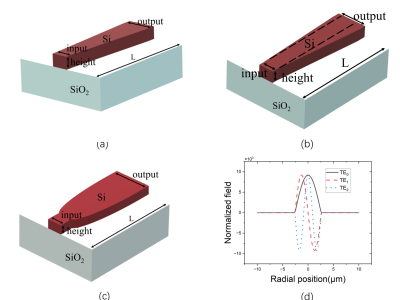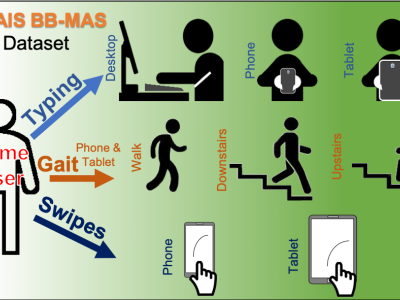improved couple mode theory

- Citation Author(s):
-
家轩 章
- Submitted by:
- Jiaxuan Zhang
- Last updated:
- DOI:
- 10.21227/2jqn-he26
 39 views
39 views
- Categories:
- Keywords:
Abstract
An improved coupled mode theory, grounded in the field matching technique, has been devised and validated for photonic devices with gradually varying structures, such as tapers. This novel approach addresses a limitation of traditional coupled mode theory, which approximates varying structures by dividing them into several uniform sections with different waveguide widths. This segmentation often leads to unphysical field reflections at the interfaces between adjacent sections, impacting both power propagation and reflection coefficients of the devices. To mitigate this issue, this paper introduces an improved formula that incorporates a coefficient matrix at the interfaces to seamlessly balance field discontinuities. Simulation results clearly show that this method significantly enhances both computational accuracy and efficiency compared to the conventional coupled mode theory approach
Instructions:
Traditional coupled mode theory approximates varying structures by dividing them into several uniform sections with different waveguide widths. This segmentation often leads to unphysical field reflections at the interfaces between adjacent sections, impacting both power propagation and reflection coefficients of the devices. To mitigate this issue, we introduce an improved formula that incorporates a coefficient matrix at the interfaces to seamlessly balance field discontinuities. Simulation results clearly show that this method significantly enhances both computational accuracy and efficiency compared to the conventional coupled mode theory approach.
The main contributions of our work include:
Improved Coupled Mode Theory: We have formulated and validated an improved coupled mode theory that addresses the limitations of traditional approaches.
Field Continuity at Interfaces: By introducing a coefficient matrix at interfaces, we reduce unphysical field reflections and improve accuracy.
Enhanced Computational Efficiency: Our proposed method significantly increases computational efficiency as demonstrated through simulation results.
We believe that our findings will advance the understanding and design of photonic devices with gradually varying structures, and will be of great interest to the readers of IEEE Photonics Journal. The journal’s strong reputation and focus on high-quality, innovative research make it the ideal venue for our work.






